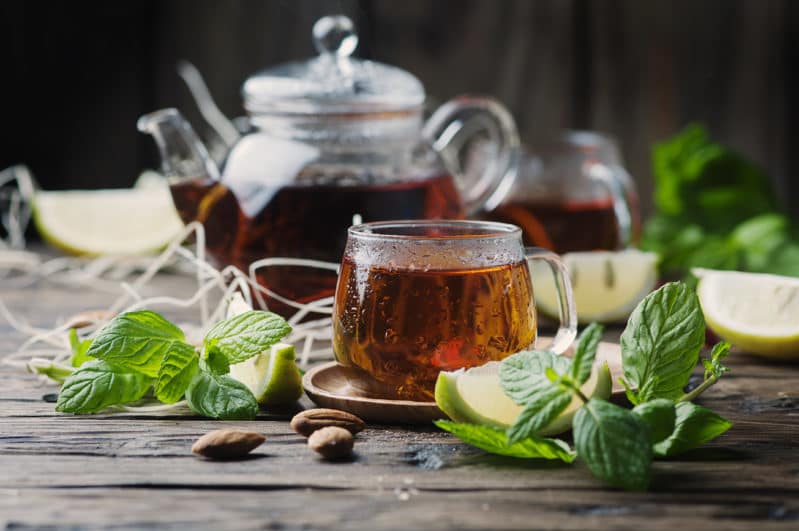Green tea is a known superfood, primarily for its EGCG content. But did you know that there is huge variation between the content of EGCG in different brands of green tea? That how you prepare and drink the tea can significantly change how much EGCG it imparts? And that your microbiome also influences how beneficial the EGCG effects are?
EGCG supplements are a useful tool in functional medicine, packing a powerful punch that can enhance a patient’s therapeutic program. However, we can all reap the benefits of EGCG by consuming dietary sources.
What’s the big deal with EGCG?
EGCG, which stands for epigallocatechin gallate, is a polyphenol (read “amazing plant compound”) with potent health protective effects against the following diseases and more:
It is also a powerful
adaptogenic modulator of our epigenetics, which regulate how our genes are expressed.
How to brew a tea that is higher in EGCG
Brewed tea contains the highest concentration of EGCG, and its concentration increases with brewing time.
To maximize EGCG content, pour boiling water (not just hot water) over a green tea bag and let steep for 10 minutes before removing the bag and drinking.
The only trade off with increased brewing time is a slight increase in bitterness. If you want to counteract this, try a little bit of lemon juice or sliced lemon, or add a lemon verbena tea bag while brewing.
Choosing the right brand of green tea
Decaf, pre-mixed green teas, or flavored green teas contain much less EGCG than freshly-brewed tea, and may also have undesirable extra ingredients.
Organic teas are also a good choice, with good brands being Choice or Traditional Medicinals.
When to consume green tea
EGCG, like other catechins,
binds to proteins in our food to form complexes that are less absorbable into our bloodstream. Therefore, to reap the most benefit from green tea, it’s best to consume between meals rather than directly with food.
EGCG can also bind with minerals in our food such as
iron reducing its absorption too—yet another reason to drink your green tea separately from other foods.
Will my green tea keep me up at night?
Green tea contains much less caffeine than black tea or coffee. However, it does still contain some caffeine, so if you’re sensitive you may want to limit your consumption to the morning hours. Big bonus, though—if you’re looking to cut back on your caffeine consumption, green tea is a nice alternative that still packs a little caffeine punch.
| Beverage | Caffeine per 8 oz cup |
| Green tea | 35-70 mg |
| Black tea | 60-90 mg |
| Coffee | 150-200 mg |
Alternative sources of EGCG
Did you know that green tea is not the only source of EGCG? While green tea is relatively more potent, you can also find a reasonable amount of EGCG in
white tea and oolong tea.
Some
other foods such as strawberries, raspberries, blackberries, plums, peaches, kiwi, and avocado also contain small amounts of EGCG.
How does this connect with my microbiome?
A healthy microbiome is likely essential for optimizing the benefits of all dietary polyphenols including EGCG. These gut organisms are known to convert polyphenols into many different derivatives that have altered absorption properties and activities in the body.
Summary: top 3 tips for maximizing EGCG benefits:
- Choose brewed green, oolong or white tea and steep for 10 minutes
- Consume away from other meals
- Keep your microbiome healthy with a diet rich in plant foods, avoiding processed and sugary foods










